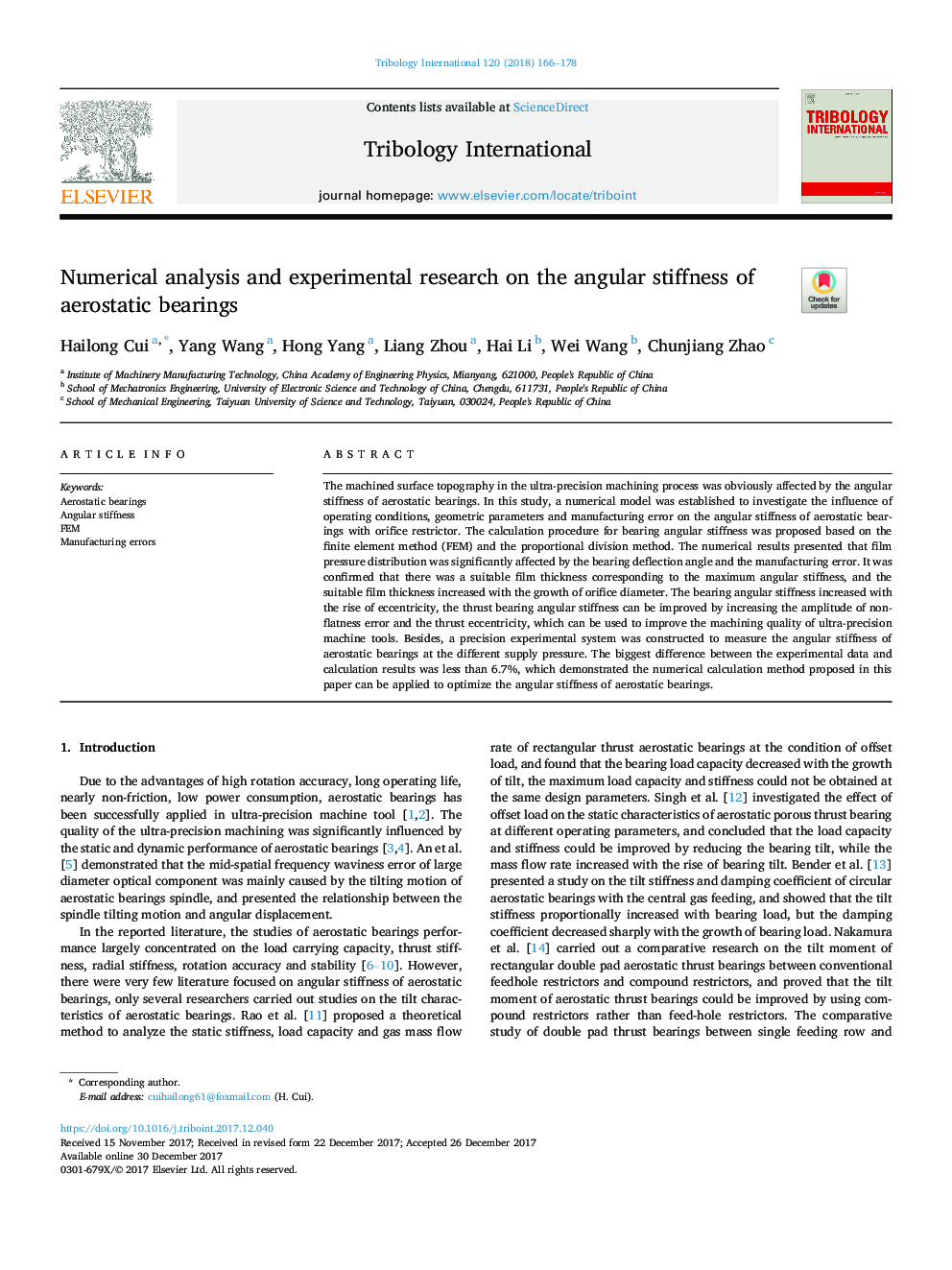| Article ID | Journal | Published Year | Pages | File Type |
|---|---|---|---|---|
| 7002035 | Tribology International | 2018 | 13 Pages |
Abstract
The machined surface topography in the ultra-precision machining process was obviously affected by the angular stiffness of aerostatic bearings. In this study, a numerical model was established to investigate the influence of operating conditions, geometric parameters and manufacturing error on the angular stiffness of aerostatic bearings with orifice restrictor. The calculation procedure for bearing angular stiffness was proposed based on the finite element method (FEM) and the proportional division method. The numerical results presented that film pressure distribution was significantly affected by the bearing deflection angle and the manufacturing error. It was confirmed that there was a suitable film thickness corresponding to the maximum angular stiffness, and the suitable film thickness increased with the growth of orifice diameter. The bearing angular stiffness increased with the rise of eccentricity, the thrust bearing angular stiffness can be improved by increasing the amplitude of non-flatness error and the thrust eccentricity, which can be used to improve the machining quality of ultra-precision machine tools. Besides, a precision experimental system was constructed to measure the angular stiffness of aerostatic bearings at the different supply pressure. The biggest difference between the experimental data and calculation results was less than 6.7%, which demonstrated the numerical calculation method proposed in this paper can be applied to optimize the angular stiffness of aerostatic bearings.
Keywords
Related Topics
Physical Sciences and Engineering
Chemical Engineering
Colloid and Surface Chemistry
Authors
Hailong Cui, Yang Wang, Hong Yang, Liang Zhou, Hai Li, Wei Wang, Chunjiang Zhao,
